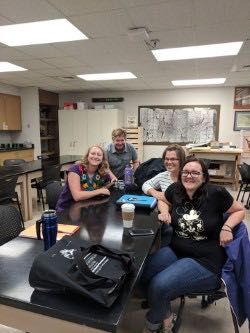Anthropology student wins Best Doctoral Paper at International Research Conference
Hannah Laird | February 1, 2019

Texas State launched a Ph.D. program in Applied Anthropology in the fall of 2018 and is already seeing success.
Sophia Mavroudas, an inaugural member of the program, won best doctoral paper at the 10th Annual International Research Conference for Graduate Students. The paper, which was a collaboration with researchers from New York City, was written over their research on the use of the microstructure of cortical bone to differentiate human from nonhuman mammals. “…my collaborators and I quantified a unique kind of structure called a ‘drifting osteon,’ and found that it was more prevalent in primates than in non-primates,” she explained.
Along with her doctoral studies, Mavroudas serves as the Coordinator of the Forensic Anthropology Center at Texas State (FACTS). FACTS is home to many useful resources for anthropologists including the Forensic Anthropology Research Facility (FARF), an Osteological Research and Processing Laboratory (ORPL), and the Grady Early Forensic Anthropology Research Laboratory (GEFARL), housed in the Grady Early building that opened in the fall of 2018.

“Texas State has many resources that helped with this research,” Mavroudas shared. “FACTS has histology and microscopy equipment that allowed us to make slides and analyze them. FACTS also has an extensive nonhuman collection that we were able to sample.”
Mavroudas anticipates this research helping in the fields of forensics and archaeology. “Forensically, it is important to be able to distinguish human from nonhuman bone, so we know if there is a case to be investigated, how many people we are trying to analyze, and who those
people are. Archaeologically, knowing what kinds of skeletal remains are found at a site helps to reconstruct the site and better interpret what it was used for and how it was occupied.”
Share this article
For more information, contact University Communications:Jayme Blaschke, 512-245-2555 Sandy Pantlik, 512-245-2922 |